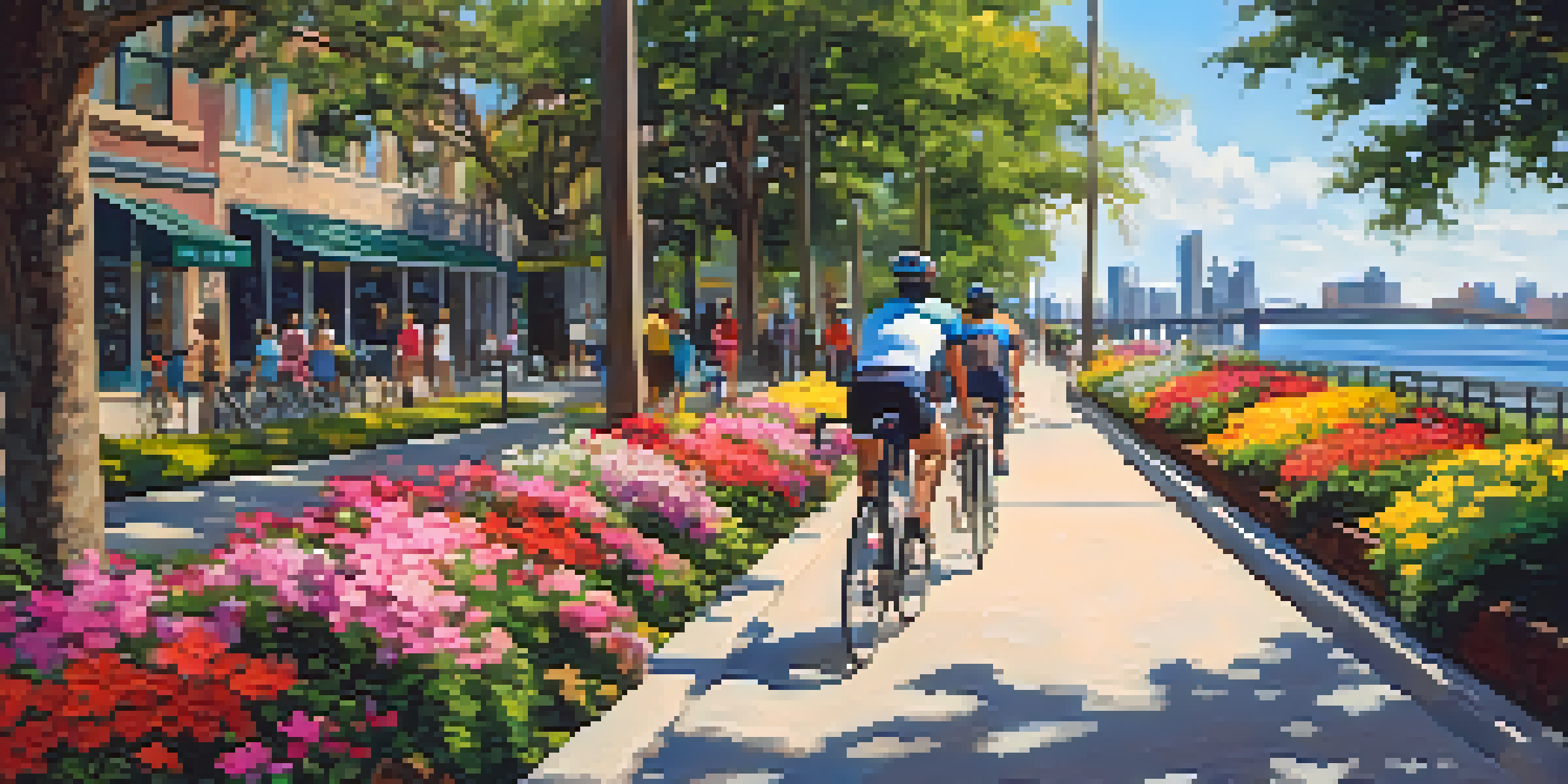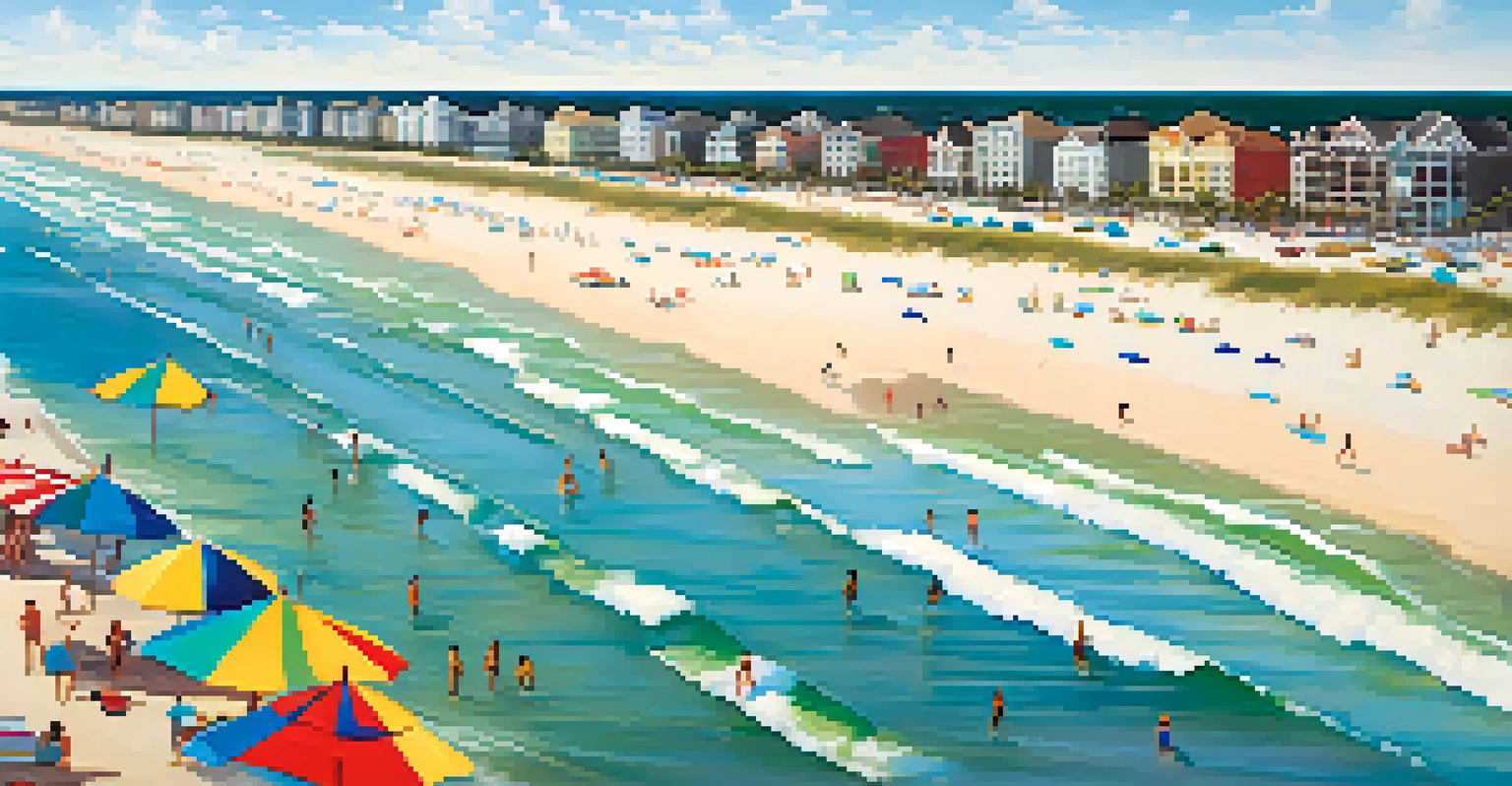Biking and Walking in Jacksonville: Infrastructure Overview

Overview of Jacksonville's Walking and Biking Infrastructure
Jacksonville, Florida, is a sprawling city that offers a mix of urban and natural landscapes. With its expanding commitment to biking and walking, the city is becoming increasingly accessible for pedestrians and cyclists alike. The infrastructure includes bike lanes, multi-use paths, and pedestrian-friendly areas designed to enhance mobility and promote a healthier lifestyle.
Bicycling is a big part of the future of urban transportation. It’s a way to alleviate traffic congestion, improve air quality, and promote health.
In recent years, the city has made significant investments in developing a network that connects various neighborhoods and attractions. This effort not only supports commuting but also encourages recreational activities, making it easier for residents and visitors to explore Jacksonville on foot or by bike. As a result, more people are discovering the joys of getting around without a car.
Moreover, Jacksonville's unique geography, with the St. Johns River running through it, presents opportunities for scenic routes that enhance the biking and walking experience. The combination of thoughtful planning and natural beauty makes Jacksonville a promising place for those who prefer to travel on two feet or two wheels.
Key Areas for Biking and Walking in Jacksonville
Certain neighborhoods in Jacksonville stand out for their pedestrian and cyclist-friendly amenities. Areas like Riverside and Avondale feature charming streets with plenty of bike lanes and sidewalks, inviting people to stroll or ride their bikes. These neighborhoods not only provide easy access to parks, shops, and restaurants, but they also foster a sense of community among residents who enjoy outdoor activities.

Additionally, the Jacksonville Beach area is a major hotspot for both walking and biking, thanks to its picturesque boardwalk and dedicated biking paths. This coastal region not only attracts tourists but also serves as a recreational hub for locals looking to enjoy the sun and surf. With easy access to the beach, it's no wonder that biking and walking are popular ways to experience this vibrant area.
Jacksonville's Growing Infrastructure
Jacksonville is enhancing its biking and walking infrastructure to promote healthier lifestyles and improve accessibility for residents and visitors.
The new Emerald Trail, a planned 30-mile loop, is set to connect various parts of the city, enhancing the biking and walking experience significantly. As it develops, this trail will offer residents and visitors an opportunity to explore Jacksonville's diverse neighborhoods, parks, and waterfronts, creating a seamless experience for outdoor enthusiasts.
Current Challenges in Biking and Walking Infrastructure
Despite progress, Jacksonville faces challenges in fully accommodating cyclists and pedestrians. One significant issue is the city's layout, which can sometimes prioritize vehicle traffic over alternative modes of transportation. This can lead to gaps in the biking and walking network, making it less appealing for those considering biking or walking as viable options.
Walking is a man's best medicine.
Moreover, safety concerns often arise, particularly in areas with heavy traffic. Many cyclists and pedestrians feel vulnerable on the roads, especially where bike lanes are incomplete or non-existent. To address these concerns, city planners are working on strategies to improve safety measures, including better signage and traffic calming techniques.
Another challenge is public awareness and education regarding biking and walking. While some residents embrace these modes of transportation, others may be less familiar with the benefits of incorporating biking and walking into their daily routines. Continued outreach and educational efforts can help foster a culture that values and promotes these activities.
The Role of Local Organizations and Advocacy Groups
Local organizations play a crucial role in advocating for biking and walking infrastructure improvements in Jacksonville. Groups like Bike Jacksonville and the Jacksonville Bicycle Coalition work tirelessly to raise awareness about the benefits of cycling and walking while pushing for better policies and infrastructure. Their efforts are essential in creating a safer, more connected environment for all.
These organizations also engage the community through events, workshops, and advocacy campaigns. By organizing group rides and walking events, they foster a sense of community while encouraging participation in biking and walking. Such initiatives help build momentum for infrastructure changes and engage residents in discussions about their transportation needs.
Community Engagement is Key
Local organizations and advocacy groups play a vital role in promoting biking and walking initiatives while engaging the community in transportation discussions.
Additionally, these advocacy groups often collaborate with city officials and planners to ensure that the voices of cyclists and pedestrians are heard in decision-making processes. Their ongoing efforts are instrumental in shaping the future of Jacksonville's biking and walking infrastructure, making it more inclusive and accessible.
Recent Developments in Infrastructure Projects
Jacksonville has seen several recent developments aimed at enhancing its biking and walking infrastructure. Projects like the expansion of bike lanes and the creation of shared-use paths are helping to create safer routes for cyclists and pedestrians. These improvements are not only beneficial for transportation but also promote a healthier lifestyle among residents.
One notable initiative is the enhancement of the Riverwalk, which offers beautiful views of the St. Johns River and encourages walking and biking along the waterfront. This project aims to create a seamless connection between various attractions, making it easier for people to enjoy the city's natural beauty while getting around. With this improvement, Jacksonville is embracing its waterfront as a vital asset for active transportation.
Furthermore, the city's investment in bike-sharing programs has gained momentum, providing residents and visitors with convenient access to bicycles. These programs make it easier for people to explore different areas without the need for personal bikes, fostering a culture of biking in the city.
Impact of Biking and Walking on Community Health
The emphasis on biking and walking infrastructure has significant implications for community health in Jacksonville. Increased opportunities for active transportation can lead to a more physically active population, reducing the risk of obesity and related health issues. By encouraging residents to bike or walk instead of driving, the city promotes healthier lifestyle choices.
Moreover, walking and biking can have positive effects on mental health. Engaging in outdoor activities can reduce stress and improve overall well-being. As people spend more time outside, they not only connect with their surroundings but also with their community, fostering social interactions and a sense of belonging.
Future Developments Look Bright
Ongoing projects and technological advancements promise to make Jacksonville more bike-friendly and walkable, enhancing overall livability.
As Jacksonville continues to develop its biking and walking infrastructure, the potential for improved public health outcomes becomes increasingly evident. Investing in these modes of transportation not only promotes physical activity but also cultivates a greater sense of community, creating a healthier and happier city for everyone.
Looking Ahead: The Future of Biking and Walking in Jacksonville
As Jacksonville moves forward, the future of biking and walking looks promising. With ongoing infrastructure projects and community advocacy, the city is on a path toward becoming more bike-friendly and walkable. Residents can look forward to a more connected network that enhances their commuting and recreational experiences.
The integration of technology into biking and walking infrastructure is also on the horizon. Smart city initiatives may include bike-sharing apps and real-time updates about bike lane conditions, making it easier for users to navigate the city. These advancements can further encourage people to choose biking and walking as their preferred modes of transportation.

Ultimately, the commitment to improving biking and walking infrastructure aligns with broader goals of sustainability and quality of life. By prioritizing these alternative modes of transportation, Jacksonville can enhance its livability, attract new residents, and create a healthier environment for all.